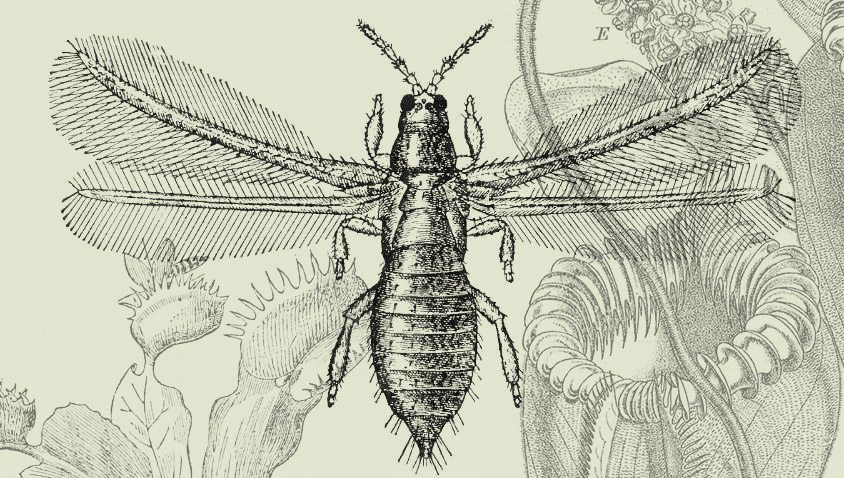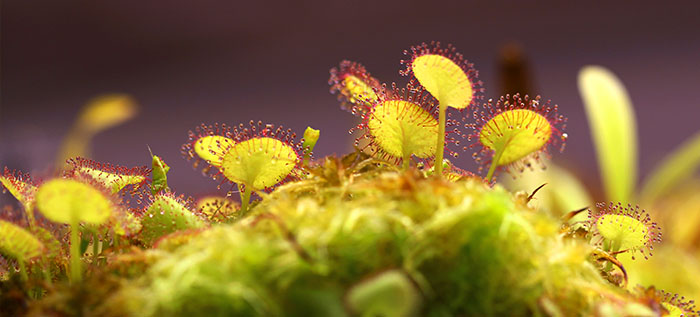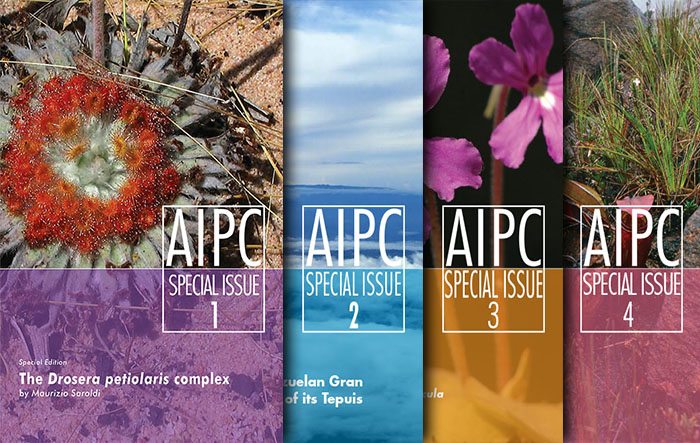What do you do when one of your carnivorous plants has a pest or fungus problem and neem or other natural pesticides or fungicides aren’t working?
Obviously something needs to be done or you run the risk of losing the plant or infecting others in your collection.
The first and most important thing to do is isolate the infected plant(s) from the healthy ones. Then, treat the pests or fungus. We recommend using one of the sprays below and have found them safe to use on several types of carnivorous plants noted at the end of this article.
Active Ingredients
The active ingredients in both of these sprays are Tau-fluvalinate, Imidacloprid, and Tebuconazole.
Tau-fluvalinate is a contact killer for pests. It works fast to stop the immediate damage.
Imidacloprid is a systemic insecticide meaning the plant will absorb the insecticide through its tissue and roots. If a pest takes a bite out of the treated plant, it will also ingest the pesticide.
Tebuconazole is a systemic fungicide. It works by inhibiting fungal growth and spore distribution, slowing the spread of the disease.
Which spray should I use?
The only difference between the two sprays above is the concentration of active ingredients. The “Ready-To-Use” version is just that; it can be applied to carnivorous plants immediately. The “Ready-To-Spray” version on the other hand is designed for hose attachment for large areas and is more concentrated. Using a hose to douse all your plants probably isn’t the best idea, but the concentrate can be economical if you have several to treat. All you need to do is dilute it to equal the concentration of the “Ready-To-Use” spray by figuring out the ratios.
Active ingredient percentages listed on each bottle:
Ready-To-Use
Imidacloprid………… 0.012%
Tau-Fluvalinate…….. 0.014%
Tebuconazole……….. 0.015%
Ready-To-Spray (concentrate)
Imidacloprid …………..0.47%
Tau-Fluvalinate ……… 0.61%
Tebuconazole ………… 0.65%
For these percentages, a ratio of 14mls of concentrate mixed with 650mls of distilled water is comparable to the Ready-To-Use formula.
What types of carnivorous plants are safe to treat?
We’ve tested this spray on several types of pitcher plants, specifically Heliamphora, Cephalotus, Nepenthes, and Sarracenia. It is safe to use on most flytraps and some sundews as well. The rule for all of these plants though is to keep the spray away from the trap portions of the plants (i.e. the dewy portions of sundew and inside pitchers). These areas of the plants are often more sensitive and absorbent and so will be more prone to burning. Try to focus the spray on the crowns, leaves, and growth points of plants as well as the soil around them. Pests and fungal infections tend to target these areas the most anyway.

Drosera falconeri, Dionaea muscipula, and Nepenthes ventricosa respectively
Follow the package instructions on how much of the spray to use and when. This particular formula can provide protection for several days depending on what you’re treating and whether the plant is indoors in a tray or outdoors and flushed with rain.
Some Notes of Caution
- Even though we have used this spray on several types of carnivorous plants, it’s always good to test it on your own plants as well. Treat a small portion of the plant and see how it reacts or only treat a single plant if you have more than one before spraying the whole batch.
- Please note Imidacloprid can be harmful to pollinators like honey bees so if your plants live outdoors, please take precautions or consider other treatment methods in order to protect these important insects.

What about you?
Do you have a tried and true pesticide and/or fungicide that you use? What plants have you tested it on? Please tell us in the comments!







Is this product ok to use in your veggitable garden?
I do not believe it would be safe to use with vegetables, it would be best to consult the manufacturer for any potential food-related uses.
Does this kill soil mites and if so do I spray it directly in the soil? If not, what other options would recommend for soil mites?
I have not attempted to treat soil mites with it before so am unsure whether it would kill them or not. Usually soil mites aren’t harmful to plants but I have heard that neem oil may help if you want to get rid of them. Neem will work best when the mites come in direct contact with it.
Is Bioadvanced 3 in 1 pesticide safe getting on the media and on roots? Or should i cover the media and just spray the leaves?
Hi Allen, thanks for your question! Getting a little bit in the root area shouldn’t hurt anything. Some plants are more sensitive than others though so if the roots can be covered easily, that will be your safest option. Thank you!
can i also use this pesticide from my seeds?
Hi Charls, we have not tried using this pesticide on seeds. It may be worth researching whether any of the ingredients have the potential to inhibit germination before trying it though. Thank you!
Do u know any other insecticides that are safe on carnivorous plants that kill ants?
Andrew, I’m sorry I don’t know of any that specifically target ants and are safe for carnivorous plants. You might check your local hardware store and see if ants are included on any of the labels and then do a test or set some bait traps around the plant. If the ants have nested in the soil, repotting with new media might be your quickest solution.
Thank you,
Elizabeth
Does this kill ants as well
Hi Andrew, thank you for your question. Ants are not included on the list of controlled pests and we have not tested it on them specifically so it is difficult to say whether it would be effective against this particular pest. I’m sorry!